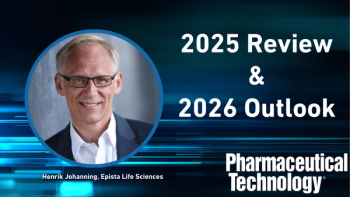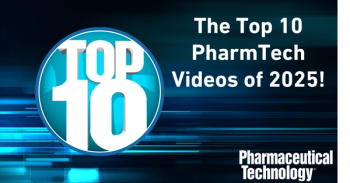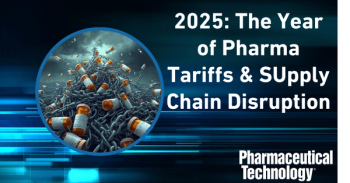
Equipment and Processing Report
- PharmTech Equipment and Processing Report eNewsletter 08-19-20
- Volume 13
- Issue 9
Expanding Options for Vaccine Packaging
Plastic primary packaging could help prevent supply chain shortages associated with high demand for COVID-19 vaccines.
As efforts to develop COVID-19 vaccines continue, the advent of non-traditional dosage forms and packaging formats expands options for vaccine packaging. Two plastic-based formats, a blow-fill-seal (BFS) syringe and glass-coated plastic vials/syringes, offer the potential for fast scale-up and good economics.
Still, the challenge is formidable. If more than one dose is needed to confer immunity, approximately 650 million doses of COVID-19 vaccine will be needed for the US population alone, reports Jay Walker, chairman and CEO of ApiJect, a supplier of the patented BFS syringe.
BFS syringe
ApiJect was awarded a contract from the US Department of Health and Human Services (HHS) and the Department of Defense (DoD), under the Defense Production Act, that is valued up to $138 million in May 2020 to accelerate the building of a US-based, high-speed, population-scale emergency drug injection capability with prefilled syringes from its subsidiary RAPID (Rapid Aseptic Packaging of Injectable Drugs) USA. The public/private effort, dubbed Project Jumpstart, is expected to supply 100 million prefilled syringes by the end of 2020 (1).
BFS technology is widely used for containers for ophthalmic products; the BFS syringe adds a needle hub. The prefilled syringe, made of pharmaceutical-grade low-density polyethylene, is under stability testing for several products. “We are racing forward at full speed and retrofitting current ophthalmic lines to [biosafety level] BSL-2 requirements,” says Walker. The next step is to build three, 350,000-ft2 greenfield facilities for vaccines to BSL-2 and current good manufacturing practices (CGMP), and add cold-chain requirements capable of producing 4 billion syringes/year. Together, the plants will house 30 BFS machines from Rommelag, each fitted with a needle-hub application module and integrated with an inline wrapper that applies foil-based outer wrap to provide barrier properties and protect product shelf life. Walker says, “We effectively need 20 machines to hit US population-scale capacity each month; the 30 lines provide redundancy,” he explains. He adds the lines should be operational by the third quarter of 2021 and “will work with the widest possible range of products . . . and be able to extremely quickly fill and finish almost any vaccine.” Because the lines have been designed to be flexible, it will be easy to switch from filling a BSL-2 product to a CGMP product.
“There’s a need for an ultra-low-cost, prefilled syringe,” says Walker, noting glass syringes are a 165-year-old technology. He adds, “Our goal is to provide vaccines in prefilled syringes and replace multi-dose vials. Ultimately, the RAPID facilities in the US will have enough capacity to serve needs beyond the US. But we also anticipate building plants outside the US once domestic facilities are completed.”
Glass-coated plastic
Another promising non-traditional primary package with impressive scale-up potential is a patented glass-coated plastic container from SiO2 Materials Science, which has received a $143 million contract from the US government to scale up capacity to support the development of COVID-19 vaccines and therapeutics (2). Lawrence Ganti, chief business officer at SiO2 Materials Science, reports, “We have 16 pharma companies using our packaging platform. This includes three companies that have a COVID-19 vaccine candidate in development.” Moderna is testing mRNA-1273, its COVID-19 vaccine candidate, in the glass-coated containers. The vaccine is given in two doses, a month apart, and Phase III trials began at the end of July 2020 (3).
In the production process for the containers, after medical-grade cyclic olefin copolymer or cyclic olefin polymer is injection stretch blowmolded, a thin (nanometers thick), glass-like barrier is applied via plasma-enhanced chemical vapor deposition (PECVD). “The SiO2 vials solve significant challenges in the commercialization of vaccines and biological drugs that presently cannot be solved by glass or plastic vials,” said Dr. Glenn Fredrickson, a materials scientist who helped develop the product (2).
In the cleanroom manufacturing process, “We apply the PECVD right after the vials come out of the molding machine and … pass through our first automated inspection system,” explains Ganti. Since the coating is covalently bonded, it cannot delaminate. “The PECVD process creates a new hybrid material,” he explains. Testing internally and by outside labs has confirmed there is no separation.
The container technology was cleared by FDA in a 510k filing in 2016 and has been confirmed as equivalent to glass. The containers have passed United States Pharmacopeia (USP) tests for glass equivalency tests for hydrolytic stability, surface durability, and container durability. “In addition, we are collecting troves of data,” says Ganti. “We capture more than 50 individual data points on each vial or syringe. We have also shared exhaustive stability data from many of our customers with FDA and have an outlined pathway for rapid regulatory filing.”
Efforts are already underway to triple production. “We have [capacity for] more than 40 million vials (any combination of sizes) and will have [capacity for] 120 million by the end of November [2020],” he reports. Turnaround time for new production lines is relatively short. He notes, “We need two months of lead time to get a new system built, validated, and online. Each system can make 40 million units.”
To maximize output, Moderna has augmented its fill/finish capabilities via partnerships with Lonza and Catalent for domestic production and ROVI for international needs. These partnerships could make it possible to deliver approximately 500 million doses in 2020 and up to 1 billion/year beginning in 2021 (3).
References
1. ApiJect, “ApiJect Awarded HHS-DOD Title 3, Defense Production Act (DPA) Contract,” Press Release, May 12, 2020.
2. SiO2 Materials Science, “SiO2 Materials Science Receives $143 Million Contract from US Government to Accelerate Capacity Scale-Up of Advanced Primary Packaging Platform for COVID-19 Vaccines and Therapeutics,” Press Release, June 8, 2020.
3. Moderna, “Moderna Announces Publication in The New England Journal of Medicine of Interim Results From Phase 1 Study of Its mRNA Vaccine Against COVID-19 (mRNA-1273),” Press Release, July 14, 2020.
Articles in this issue
over 5 years ago
Solid-Dose Continuous Manufacturing Presses Onover 5 years ago
Gaining Experience in Continuous ManufacturingNewsletter
Get the essential updates shaping the future of pharma manufacturing and compliance—subscribe today to Pharmaceutical Technology and never miss a breakthrough.




